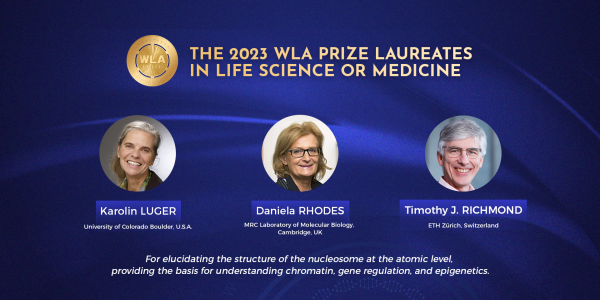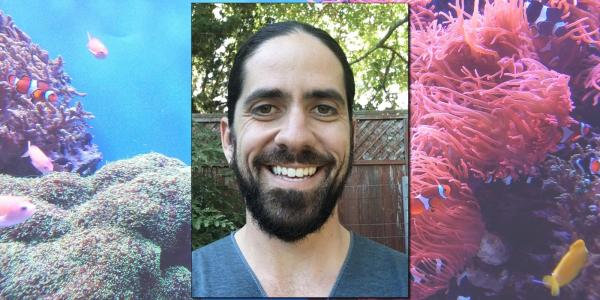Researchers Emily Yeh and Brian Catlos are recognized for prior career achievements and exceptional promise
Two University of Colorado Boulder scholars have been named 2024 Guggenheim Fellows, recognizing not only their prior career achievements but also their exceptional promise.
Emily Yeh, a professor of geography and College of Arts and Sciences professor of distinction, and Brian Catlos, a professor of religious studies and director of the CU Mediterranean Studies Group, are among a group of scholars, scientists, artists and writers representing 52 scholarly disciplines and artistic fields, who “are meeting (humanity’s existential) challenges head-on and generating new possibilities and pathways across the broader culture as they do so,” noted Edward Hirsch, award-winning poet and president of the John Simon Guggenheim Memorial Foundation, in announcing the fellowships.
The monetary award that accompanies the Guggenheim recognition will support Yeh in writing a book about global geographies of weather modification in the context of climate change adaptation and growing discussions about geoengineering.

Emily Yeh has conducted a significant amount of research in China and Tibet, and first became interested in cloud seeding through a Chinese project called Sky River, or Tian He.
“It’s going to be an expansion of my previous research on cloud seeding,” Yeh explains. “Cloud seeding as a practice has been around since the 1950s, but a lot of people don’t really know that it happens.
“I think it’s really important right now for two reasons: One is climate change and drought, with cloud seeding being seen as a form of climate adaptation which is being adopted by countries around the world. The second is the growing interest in stratospheric aerosol injection, a form of geoengineering, for climate mitigation, and the public conflation of this with cloud seeding.”
Yeh, who has conducted a significant amount of her scholarly research in China and Tibet, first became interested in cloud seeding through a Chinese project called Sky River, or Tian He: “There were a whole bunch of reports about how the Chinese government was going to move water vapor from the Himalayas and channel it over the Tibetan Plateau to the north. I started following that issue, and through that realized that even though that idea of channeling water vapor itself isn’t a reality, some of the ideas behind it are very revealing of certain imaginations of nature that also underpin the Chinese state’s discourse of ‘ecological civilization.’”
She says that in some of the Tibetan villages she’s visited on the border of Sichuan and Gansu provinces, few safety precautions accompany cloud seeding measures, so that rockets can fall without warning on herders’ pastures. They experience cloud seeding as a form of injustice, she explains. At the same time, experiences raise questions about what cloud seeding operations claim versus what effects they have. “Overclaiming of results is leading to conspiracy theories, like the idea that recent flooding in the United Arab Emirates was caused by cloud seeding rather than climate change,” Yeh says.
Boulder, as a national and international center of cloud seeding research and technology, is an ideal place to study not only cloud seeding in the context of drought in the American west, Yeh notes, but also institutional and political economic contexts for cloud seeding research and practice globally.
Reassessing history
For Catlos, the Guggenheim recognition will support him in writing An Age of Convergence: Christians, Muslims and Jews in the Pre-Modern Mediterranean, a culmination of his scholarship to date showing when, how and why members of these three faith communities—which hail from Africa, the Middle East and Europe—together laid the foundations of Western modernity.
“Traditionally, the way we’ve conceived of the West has been this sort of western European, essentially Christian culture that coalesced in the Middle Ages and led to Anglo-European culture and society today,” Catlos explains. “That’s based on a lot of assumptions and perspectives that are rooted in 19th century ideas of how society works—some racist, some colonial, some rooted in notions that the fundamental building block of history is the nation.

Brian Catlos' research centers on Christian-Muslim-Jewish relations and the medieval Mediterranean, and he has authored and co-authored books related to this research.
“These are ideas that became popular in the 19th century, a great age of nationalism, racism and colonialization as well. When we look at data and pull back from presumptions and prejudices, what we see is that what became the modern West—western Anglo-European culture and society—emerged out of a much broader historical background.”
In 650 CE, as Islam began expanding from the area west of the Indus River to the Atlantic Ocean and all the way around the Mediterranean, a common telling of the history of that time holds that the area was uniformly Abrahamic in terms of faith and culture. “There’s this idea that the three religious cultures were divided and oppositional—and they were to certain degree—but they also were deeply enmeshed and influenced each other both through polemic and also through collaboration and shared knowledge.”
Another prevalent myth, Catlos says, is that there were distinct spheres: a Christian sphere, a Muslim sphere, “maybe a Latin-Christian sphere, a Christian and Byzantine sphere, a Christian and Muslim sphere, and they were somehow coherent, homogenous social, cultural and political entities in opposition with each other,” Catlos says.
“That’s not really the case. There were lots and lots of Muslims and Jews living in Christian lands and vice versa. The division was not really there except in certain contexts.
“Think about crusade and jihad, about Christianity and Islam, about this clash of civilizations. If we look at the political and economic history of the pre-modern period in the larger Mediterranean world, we see that both of these spheres are broken into a whole range of different kingdoms, city states, etc. that in fact are in competition with each other, for number of reasons, not the least of which is geography and how it impacted the way that resources appear and are accessed.”
Rather than a united front of Muslim states vs. Christian states, Catlos says, “we see competition between Muslim states with each other, Christian states with each other, Muslims and Christian principalities seeking alliances with each other against rivals of their own faith. Much of the history of the West that we are taught is distorted and needs to be reassessed.”
Did you enjoy this article? Subcribe to our newsletter. Passionate about arts and sciences? Show your support.



